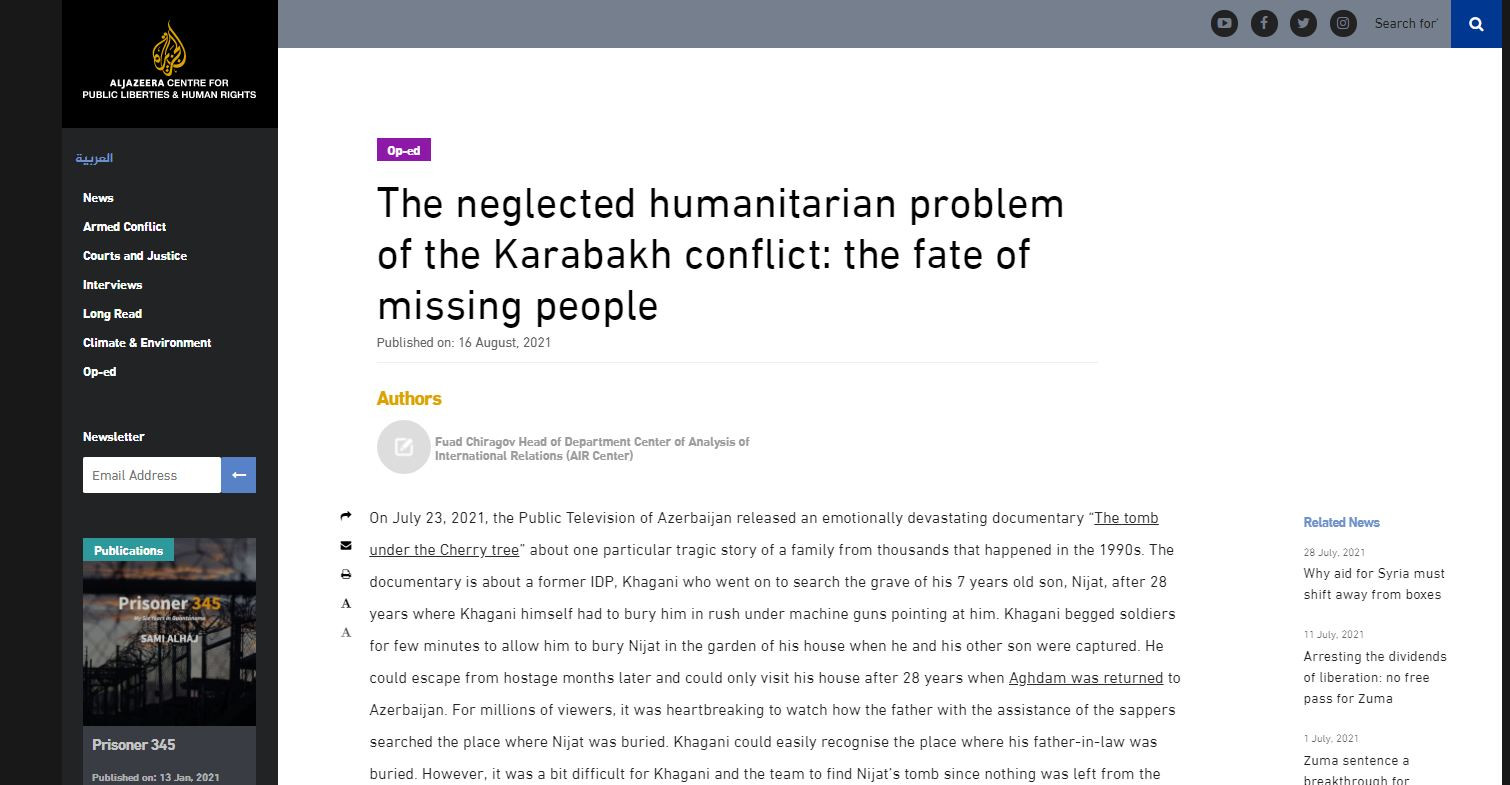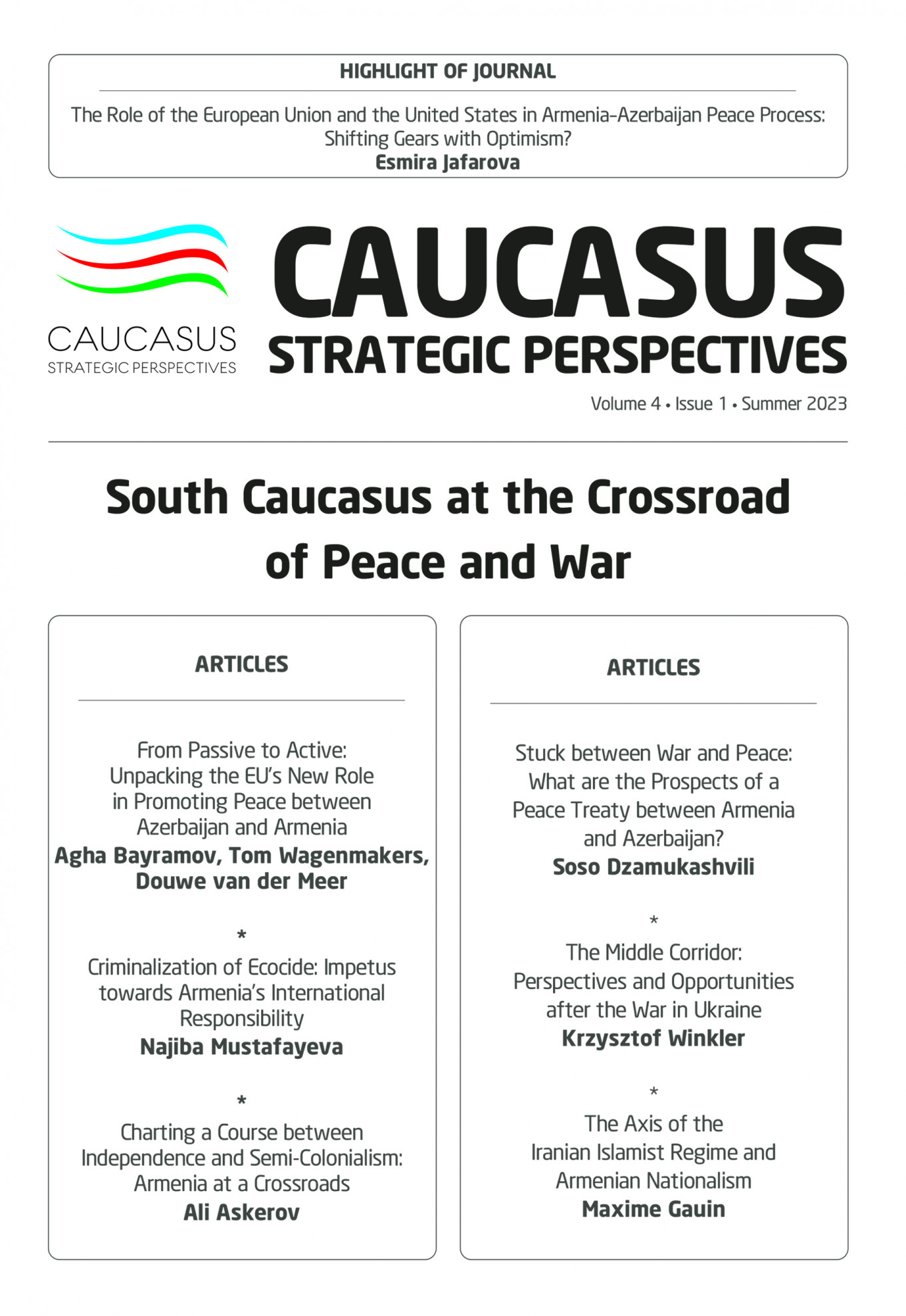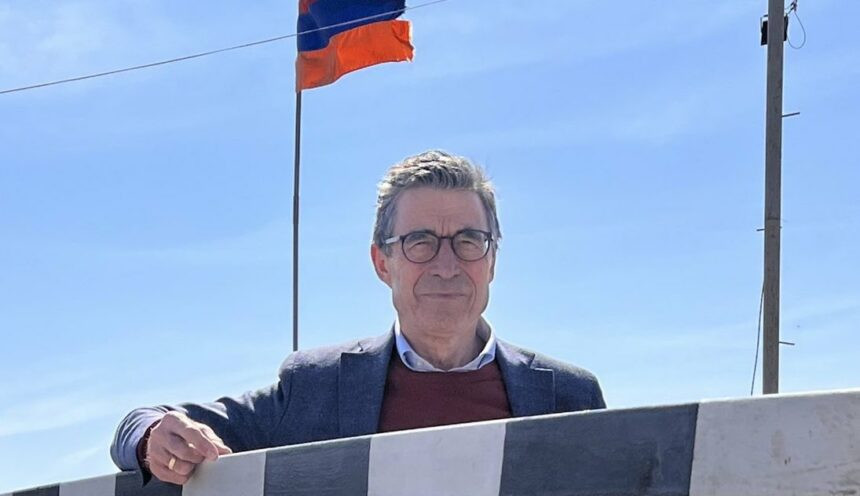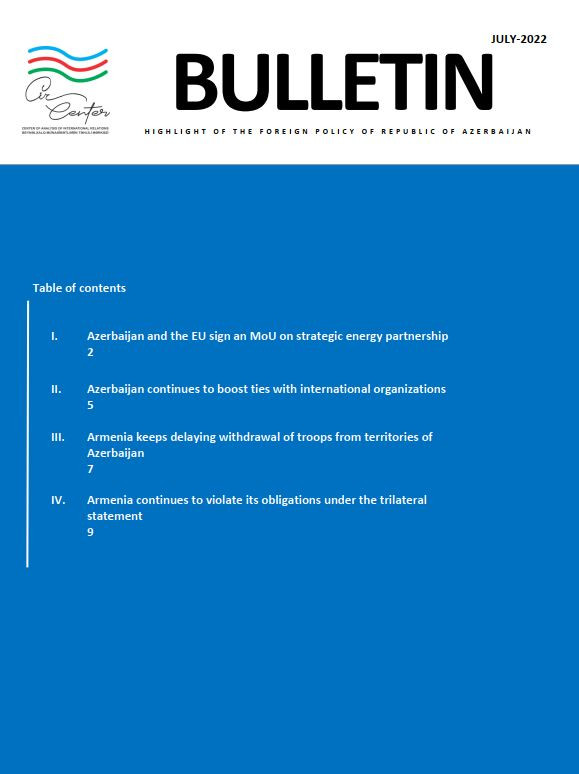On July 23, 2021, the Public Television of Azerbaijan released an emotionally devastating documentary “The tomb under the Cherry tree” about one particular tragic story of a family from thousands that happened in the 1990s. The documentary is about a former IDP, Khagani who went on to search the grave of his 7 years old son, Nijat, after 28 years where Khagani himself had to bury him in rush under machine guns pointing at him. Khagani begged soldiers for few minutes to allow him to bury Nijat in the garden of his house when he and his other son were captured. He could escape from hostage months later and could only visit his house after 28 years when Aghdam was returned to Azerbaijan. For millions of viewers, it was heartbreaking to watch how the father with the assistance of the sappers searched the place where Nijat was buried. Khagani could easily recognise the place where his father-in-law was buried. However, it was a bit difficult for Khagani and the team to find Nijat’s tomb since nothing was left from the house, the garden, and the Cherry tree under which the father buried his son.
For western viewers, these images might trigger the tragic legacies of Srebrenica. Unlike, the tragic events of the Balkan wars in the 1990s, the events in Karabakh of the same period couldn’t draw the same attention of the international community and media. The media extensively covered only the 44-day war in Karabakh of 2020. It was more about the fighting of two conventional armies that had been sitting against each other in the trenches for 26 years and waiting for another round of battles. Though there were several incidents of indiscriminate rocket and missile strikes on civilian population and facilities last year, the casualties among civilians were much less than the death toll among civilians during the first phase of the war between Azerbaijan and Armenia in the 1990s. The 44-day war caused the deaths of 60 Armenian civilians and 100 Azerbaijani civilians according to the official reports. 416 civilians from the Azerbaijani side and 165 civilians from the Armenian side were injured.
According to the State Commission on Prisoners of War, Hostages and Missing Persons, the fate of 3890 missing people remains unknown since the 1990s. Obviously and realistically, all these missing people are not alive, their remains are in different parts of Karabakh -in mass graves and wait for being discovered by their dears and families-. The war in the 1990s was much more brutal for civilians, out of 3890 missing people 719 were civilians, including 71 children, 267 women, and 326 elderly people. The most known tragic event of the first Karabakh war happened in Khodjali. The former president of Armenia said in an interview that there was a deliberate attack on civilians. That attack was well documented by international human rights organizations and media outlets. Unfortunately, other tragedies and attacks on civilians were not spotted and documented by international human rights NGOs and media. The return of Kalbajar to Azerbaijan helped to uncover some mass graves. New facts were obtained with regard to the tragedies of Bashlibel. The newly discovered mass graves in Bashlibel, along with the testimonies of the witnesses demonstrate that the scale of human rights violations. These violations should be adequately evaluated and addressed by the international community.
The Russian-brokered ceasefire deal on November 9, 2020, stopped the 44-day- second Karabakh war between Armenia and Azerbaijan. There were some concerns about the mutual exchange of prisoners of war (POW) and hostages, and the exchange of dead bodies (Article 8). Since November of 2020, Azerbaijan returned the remains of 1618 Armenian military personal. An active search for missing Armenian military personal continues, however, despite consistent demands Armenia has not delivered any information about the fate of 3890 missing people since the 1990s.
Probably, decades and enormous efforts are needed to heal the wounds of both societies. Adequate international attention, international prosecution of war criminals might be required for confidence building between societies; and to prevent future tragedies too. Also, true, professional, and humanitarian mediation of different international NGOs which don’t pursue geopolitical interests might help reconcile the two societies and solve some humanitarian issues like missing people. So far, the international community, namely the Minsk Group and its three Co-chairs failed to bring the conflicting parties to a peaceful resolution.








